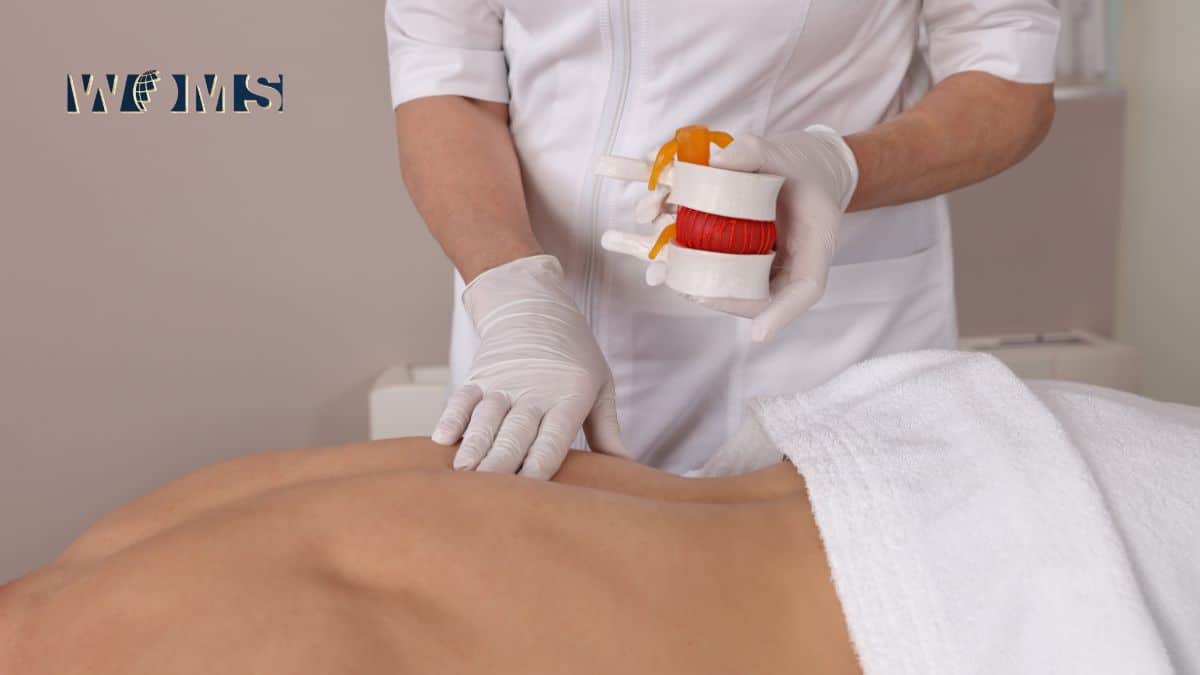Laser Therapy for Herniated Disc: A Promising Non-surgical Treatment Option

A herniated disc is a common musculoskeletal condition that affects millions of people worldwide. It occurs when the material of the intervertebral disc, which acts as a cushion between the vertebrae of the spine, protrudes into the spinal canal or adjacent nerve root. This can cause pain, numbness, muscle weakness and other symptoms.
Reports suggest that herniated discs affect approximately 1-3% of the adult population worldwide. The condition is more common in people between the ages of 30 and 50 and has been associated with certain risk factors, such as obesity, lack of physical activity, ageing, and genetics. When suffering from this condition, it is common to think that surgery is the only option, so knowing the different treatments that can be used to help find quicker and more effective solutions.
The treatment of herniated discs may vary depending on the severity of the condition. In many cases, symptoms can be managed with physiotherapy, pain medication, and treatment for herniated disc without laser surgery. However, in more severe cases, surgery may be necessary to remove the hernia and alleviate symptoms.
Surgery for herniated discs is performed through a procedure called discectomy, which involves the removal of the herniated disc material. While discectomy can be effective in relieving symptoms of the herniated disc, it can also present certain risks and complications, such as infection, bleeding, nerve damage, and muscle weakness.
Furthermore, herniated disc surgery can have a prolonged recovery time, which may limit the patient’s ability to perform daily activities and work. For this reason, many patients seek less invasive and alternative treatments, such as laser therapy, to alleviate symptoms of the herniated disc and avoid the need for surgery.
Understanding Laser Therapy for Herniated Disc
Laser therapy for the treatment of herniated discs is a relatively new technique that has emerged as a less invasive alternative to traditional surgery. The clinical use of this technique began to gain wider acceptance in the 2000s, but its development and previous studies date back several decades.
In the 1990s, doctors began to explore the use of laser therapy for the treatment of herniated discs. Clinical studies were conducted using different types of lasers, such as the diode laser and Nd:YAG laser, both still used today to reduce the size of herniated discs and relieve symptoms.
Benefits of Laser Therapy
One of the first relevant studies about the benefits of laser therapy was published in 1994 by Dr. Michael Schiffer in the medical journal “Lasers in Surgery and Medicine”. In this study, a diode laser was used to treat 28 patients with herniated discs. The study concluded that diode laser therapy was effective in reducing the size of the hernia and improving symptoms in most patients. Among the main benefits of laser therapy for herniated discs, we find:
- Non-invasive: Laser therapy for disc herniation is a non-invasive treatment option that does not require surgical incisions or general anesthesia.
- Reduced pain: The treatment can help reduce the pain associated with disc herniation by reducing inflammation and pressure on the nerves.
- Improved mobility: By reducing pain and inflammation, laser therapy improves mobility and range of motion for the patients.
- Shorter recovery time: Since laser therapy is a non-invasive treatment, the recovery time is often shorter compared to traditional surgery.
- Lower risk of complications: Laser therapy is generally considered to be a safe and effective treatment option for herniated discs with a lower risk of complications.
Several additional studies have been conducted to evaluate the efficacy of laser therapy for the treatment of herniated discs. Overall, The researchers reported a success rate of 86% in reducing the size of the hernia, relieving pain, and improving function.
Techniques and Outcomes
There are various types of laser therapy available for Laser treatment for herniated disc, and the specific procedure used may depend on the type of laser and treatment approach employed. Below are some of the most common procedures used in laser therapy for disc herniation:
- Diodo laser: In this procedure, a diode laser is used to apply direct light energy to the disc herniation through an optical fiber. The heat generated by the laser is used to vaporize the hernia tissue, reducing its size and relieving pressure on adjacent nerves.
- CO2 laser: Like the Diodo Laser, the CO2 laser is used to vaporize the hernia tissue. The laser is applied through a small probe inserted into the hernia through a minimal incision in the skin.
- Nd:YAG laser: On the other hand an Nd: YAG laser reduces the size of the hernia. The laser is applied using an optical fiber that is inserted through a small incision made in the skin.
Overall, this therapy is performed in an outpatient setting and does not require general anesthesia. Local anesthesia is used to numb the skin and surrounding tissues, and the procedure is carried out with the aid of X-ray or magnetic resonance imaging to ensure accuracy and safety.
After the procedure, patients may experience some pain and discomfort for a few days, but this usually resolves over time. It is important to follow the doctor’s instructions regarding postoperative care and physical activity to ensure a safe and effective recovery.




